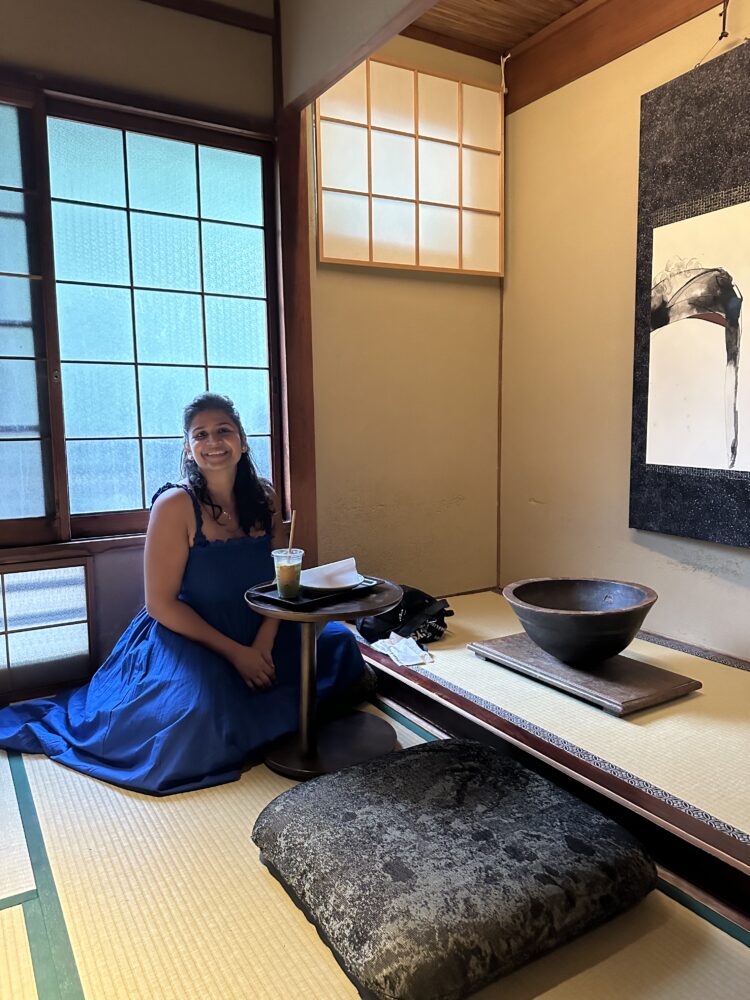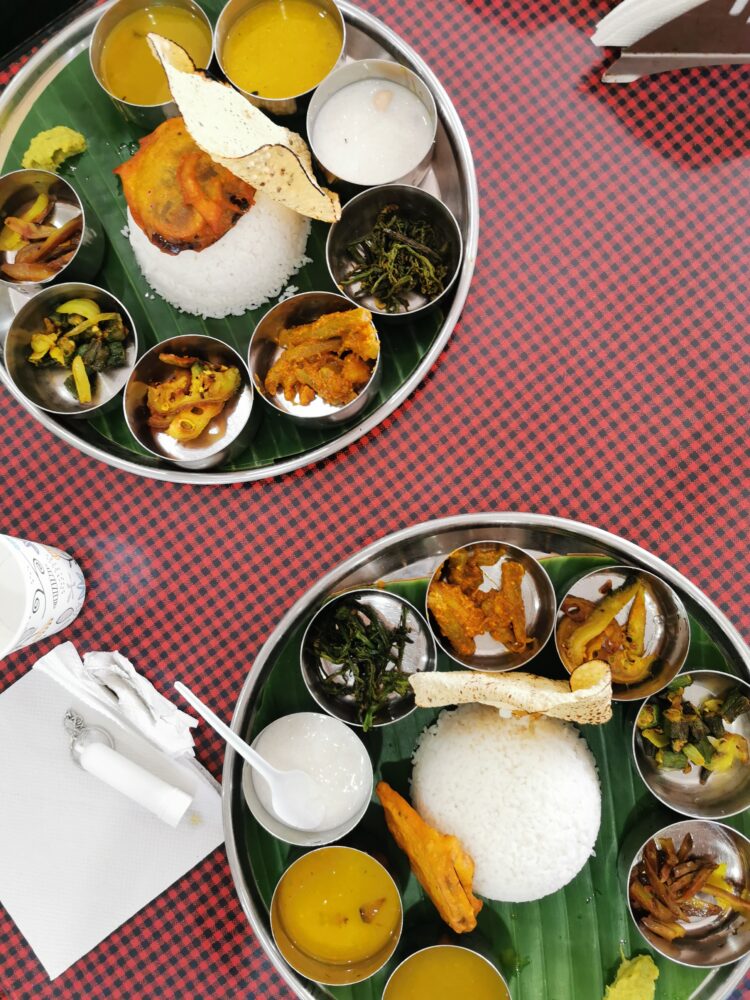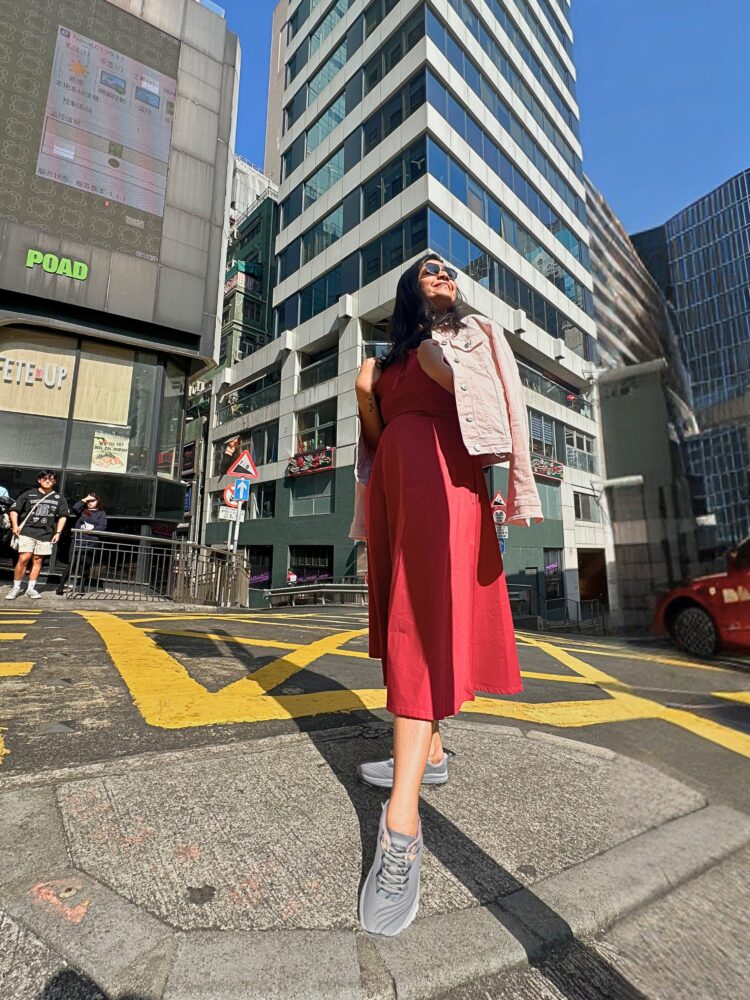Etiquettes in Japan
In Japan, respecting etiquette and showing consideration for others are deeply ingrained values, and tourists who don’t adhere to these norms often create tensions. To avoid upsetting or disrespecting local residents, it’s essential for foreign visitors to acquaint themselves with the fundamental etiquette guidelines.
1. Inside the house
In Japan, there is a significant emphasis on indoor etiquette, particularly concerning footwear. There’s a distinct separation between outdoor and indoor spaces, and this is reflected in the way shoes for outdoors and slippers for indoors are used. This practice isn’t limited to private homes; it extends to traditional ryokans, certain restaurants, and the interiors of numerous temples, castles, and historic structures.
- Genkan
In Japan, the demarcation between outdoor and indoor spaces is defined by an entryway area known as the genkan, rather than the door itself. This space is typically split into two levels: a lower section where shoes are removed and put on, and an elevated area marked by different flooring, signifying the start of the indoor living area. It’s important not to tread on this elevated section with outdoor shoes. Also, when taking off shoes, one should be mindful not to step back onto the lower part of the genkan in socks. As a sign of good manners, it’s customary to neatly align shoes to face the door after removing them.
Tourists planning to visit numerous historic sites in Japan might find it convenient to wear shoes that can be quickly slipped off and on, given the likelihood of having to remove them frequently throughout the day. Additionally, it’s advisable to ensure socks are tidy and hole-free. In case of rain, wet umbrellas and raincoats should either be left outside or at the entrance, or placed in plastic bags, to avoid bringing water indoors.
- Slipper etiquette
Hosts in Japan typically provide slippers for guests. If a guest is not wearing socks, it’s courteous to have a clean pair to put on after taking off outdoor shoes, as going barefoot in someone’s home is often seen as impolite, though it may be acceptable in casual settings. Slippers are usually worn in most parts of the house except for rooms with tatami flooring. Before entering a tatami room, guests should remove their slippers and leave them neatly outside the room.
Additionally, in many Japanese homes and establishments, special slippers are provided specifically for use in the washroom. When entering the washroom, it’s customary to leave regular slippers outside and switch to these toilet slippers. A frequent oversight by foreign visitors is forgetting to switch back to the regular slippers after leaving the washroom. For more information on how to use Japanese toilets, visitors can refer to our dedicated toilet page.
- Handling luggage
Once past the genkan, it’s recommended to carry wheeled suitcases rather than dragging them, particularly in tatami rooms. This practice helps in maintaining the cleanliness of the floors and prevents damage to the delicate tatami mats. Care should be taken when handling luggage on tatami mats and wooden floors to avoid any potential damage. In fact, some accommodations may request that guests avoid placing luggage directly on tatami mats altogether.
- Indoore photography
Rules regarding indoor photography at tourist attractions in Japan vary greatly. While most temples and shrines do not permit photography within their worship halls, the policies at museums and historic buildings can differ significantly. Some may allow photography, while others might restrict flash photography or ban photography entirely. Additionally, the use of tripods, monopods, and selfie sticks is often prohibited at certain sites. It’s always a good idea to check for signs or inquire with staff members if there’s any uncertainty about the photography rules.
2. On the streets
In Japan, showing respect and consideration for others is deeply respected, and this ethos is evident in how people conduct themselves, particularly in crowded urban areas like Tokyo. In these bustling cities, the need for cooperation is paramount to maintain harmony. To help you understand and adapt to the organized yet complex street etiquette in Japan, here are some helpful tips.
- Maintaining awareness of one’s surroundings is crucial in Japan, especially in busy areas. It’s important to ensure that neither you nor your luggage obstructs walkways. Often, groups of foreign tourists inadvertently hinder the smooth movement of pedestrians by standing in the way. If you need to wait for someone, find a spot where you won’t disrupt the flow of people. Also, take care that your luggage isn’t in the way of others. Loitering or sitting on the ground is generally discouraged.
- While not exactly a formal etiquette rule, it’s interesting to note that in many countries, people tend to walk on the same side as the local driving direction. In Japan, where cars drive on the left, this often translates to pedestrians also walking on the left side of pathways, frequently without even realizing it. Thus, when navigating through Japan’s bustling streets, you might find it smoother to keep to the left, potentially reducing the chances of bumping into others.
- Travelers in Japan may soon observe that apart from train stations and convenience stores, public trash bins are surprisingly scarce. The norm here is to hold onto your garbage, carrying it with you until you come across a bin or return to your accommodation. This practice encourages visitors to be mindful about their waste disposal. For smokers, the expectation is to use portable ashtrays for cigarette butts to prevent littering. These portable ashtrays are readily available at convenience stores.
- In Japan, eating on the move is generally frowned upon. It’s more polite to take a moment to sit down, or at least stand aside from busy pathways, when having a meal or snack. Eating while walking can lead to accidental spills on others, contribute to littering, and is generally considered discourteous by locals. Similarly, smoking while walking, particularly in crowded areas, is seen as highly inappropriate. In fact, in most city centers, smoking on the streets is not allowed, with designated smoking areas being the only exception.
- Although it’s now more common to see couples holding hands in public, which has grown in acceptance over the years, public displays of affection such as kissing are still considered quite inappropriate in Japan.
- Japan adheres to stringent privacy regulations regarding photography. It’s generally advisable not to share any photos publicly where individuals can be identified without their consent. When snapping pictures, it’s important to be mindful of those around you and avoid obstructing pedestrian movement. Additionally, for hygiene purposes, it’s essential not to step on benches or other seating areas with shoes, even if it’s to get a higher vantage point for a photo. Also, flying drones in large cities is not allowed without prior authorization from the relevant authorities.
3. Train manners
Railway stations, platforms, and trains in Japan are often bustling hubs of activity that can pose safety risks and are places where travelers desire a smooth journey. To minimize conflicts between foreign tourists and local commuters, we’ve compiled some guidelines on appropriate conduct in these railway environments.
- Inside stations
It’s not uncommon to see groups of tourists and their luggage causing inconveniences by blocking pathways. To ensure a smoother experience for everyone, it’s crucial to be aware of the flow of people around you. Avoid obstructing passageways with yourself, your backpack, or your suitcases. When stationary or waiting, move to areas that don’t impede traffic.
Don’t come to a halt right before or after ticket gates or escalators. Plan ahead and have your tickets ready in advance. Pay attention to suitcases you’re pulling; keep them close to avoid tripping others. During busy hours, follow the walking directions indicated by floor markings and arrows, especially on stairs and passageways. Refrain from looking at your phone while walking, and avoid rushing for trains as running poses a risk of injury.
While there’s a recent discouragement of walking on escalators, it’s not always enforced, especially during peak times. If you choose to stand, do so on the left (except in Osaka, where it’s on the right). Exercise caution with luggage on escalators to prevent accidents. When waiting for trains, join the lines formed by other passengers on the platform, following any marked indications. Smoking is only allowed in designated areas within the station, if available.
- Inside trains
Wait for passengers to alight before boarding and scoot to allow others to board as well. Hold children’s hands when boarding or alighting. Remove backpacks in crowded trains, place them in front, or use luggage racks. Avoid blocking aisles or door areas with luggage. Large luggage should be avoided during rush hours; consider using delivery services.
Keep your voice down and avoid loud conversations or phone calls, except on long-distance train decks between cars. Use silent mode and keep headphone volume low.Occupy only one seat and don’t spread out or place belongings on adjacent seats. Avoid stretching out your legs, and remove children’s shoes if they kneel or stand on seats. Priority seats should be left for those who need them. Use a face mask if you have a cold.
When reclining seats on long-distance trains, do so gradually and considerate of the person behind you. Upon alighting, return the seat to its upright position, open window blinds, and take all the trash with you. Refrain from eating on urban trains, but it’s acceptable to consume snacks, meals, and drinks at your seat on long-distance trains. Avoid strong-smelling food and ensure no garbage is left behind.
4. Dining out
Japan boasts a wide array of restaurants, each with its unique charm. To ensure a seamless and delightful dining experience in the country, consider the following tips.
- Entering the restaurant
In Japan, dining out is a delightful experience with various restaurant customs to keep in mind. Many eateries showcase lifelike plastic or wax replicas of their dishes at the entrance, aiding patrons in selecting their meals, which is especially helpful for non-Japanese speakers. Upon entering, guests are warmly greeted with “irasshaimase,” and restaurant staff typically lead diners to their tables, as customers seldom seat themselves. While most restaurants offer Western-style tables and chairs, traditional low tables with floor cushions (zashiki) are also common, and diners may be asked to choose their preference. When opting for zashiki-style seating, it’s customary to remove shoes before entering. Additionally, as of April 2020, a new anti-smoking law generally prohibits smoking in restaurants, although smaller, older establishments may permit it if they display a designated sign at the entrance.
- Playing
The bill is typically presented face down either upon receiving the meal or after you’ve finished dining in most restaurants, and it’s customary to take the bill to the cashier near the exit when leaving, as table-side payment is less common. Cash is the preferred method of payment, although an increasing number of restaurants now accept credit cards or IC cards like Suica. Cheaper eateries, especially ramen and gyudon establishments, often operate with a different system where patrons purchase “meal tickets” from a vending machine near the entrance, then hand them to the staff for meal preparation and service. Tipping is not a custom in Japan; in fact, if you attempt to tip, restaurant staff may chase you down to return any money left behind. Instead, it’s considered polite to express gratitude by saying “gochisosama deshita” (“thank you for the meal”) when departing.
- Ordering and eating
Upon being seated, diners usually receive a complimentary glass of water or tea, or it’s available for self-service. A moist towel (oshibori) is provided for hand cleaning. Chopsticks, if not pre-set, can be found in a box on the table, often as disposable wooden chopsticks that need separation. Some restaurants have illustrated menus, while others may have only Japanese menus or display offerings on the walls. If uncertain about the menu, asking for recommendations (osusume) or the chef’s choice (omakase) is advisable. Omakase may result in a prix fixe-style meal, but it’s typically an adventurous and potentially higher-cost choice. To order, use “sumimasen” (excuse me) or a call button if available. Waitstaff may repeat the order for confirmation. In some places like izakaya, groups order and share dishes, while others expect individual ordering.
5. Japanese bathroom
In Japan, taking a bath is more than just cleaning; it’s a cherished ritual for relaxation. A typical Japanese home has a two-room bathroom setup, with an area for undressing and a bathing area equipped with a shower and deep bathtub. Interestingly, the toilet is in a separate room.
Bathing in Japan follows a specific process: start with a preliminary rinse outside the bathtub, then soak in hot water (40-43°C) for relaxation. Afterward, step out to clean your body with soap, being careful not to let any soap enter the bath. Return for a final soak, and once done, leave the bathwater for the next family member. Modern bathtubs can even be programmed for convenient water filling and temperature control.
6. Japanese toilets
In Japan, you’ll encounter two types of toilets: Japanese-style and Western-style. Public restrooms often have both toilet styles, though older facilities may only have Japanese-style toilets, while newer ones may exclusively offer Western-style toilets. Most modern homes and hotels in Japan use Western-style toilets. Western-style toilets in Japan often come with features like heated seats, built-in showers and dryers, and automatic lid openers. Both types of toilets typically offer two flush modes: “small” and “large,” which vary in water usage.
While the availability of toilet paper in public restrooms has improved, it’s a good idea to carry a small pack of tissues just in case. Additionally, as paper towels or dryers may not always be provided, carrying a handkerchief is recommended.
In private homes, minshuku, or ryokan, you might find toilet slippers exclusively for use inside the washroom. Remember to switch back to your regular slippers when leaving to avoid a cultural faux pas. For enthusiasts, there’s even a TOTO Museum in Kitakyushu dedicated to the history of toilets and Japan’s leading toilet manufacturer, TOTO.
7. Japanese greetings
In Japan, greetings are expressed through bowing, a common and respectful practice. The depth of the bow reflects the level of respect, ranging from a subtle nod to a deep waist bend. Bowing is used for greetings, expressing gratitude, apologizing, making requests, or asking for favors. Kneeling to bow is customary on tatami floors. It’s not expected for foreigners to know all the bowing rules; a nod of the head is usually sufficient. Handshakes are uncommon but may occur in international business settings. Business cards are exchanged during formal meetings. In shops and restaurants, customers are welcomed with “irasshaimase,” and a simple nod or smile suffices as a response.






